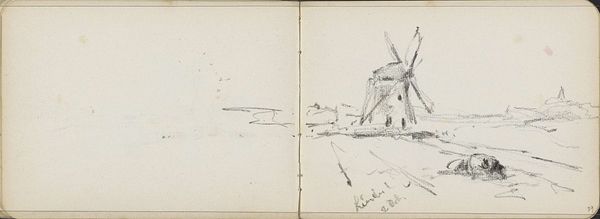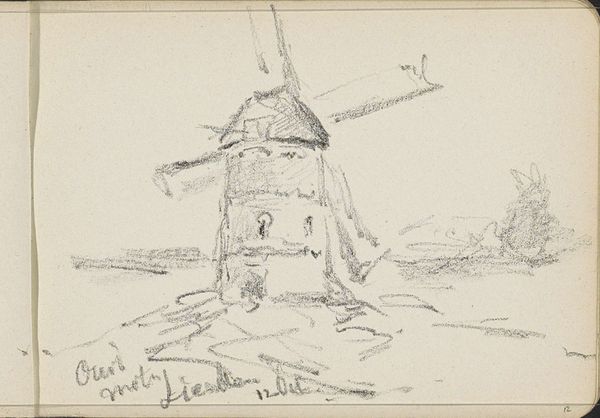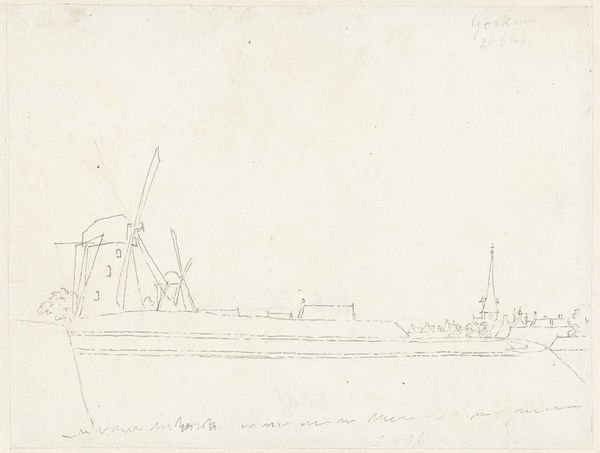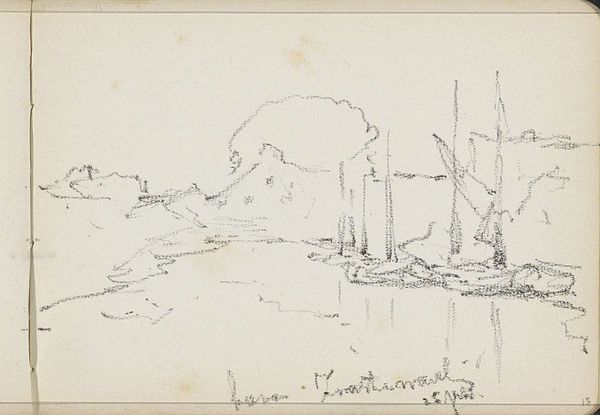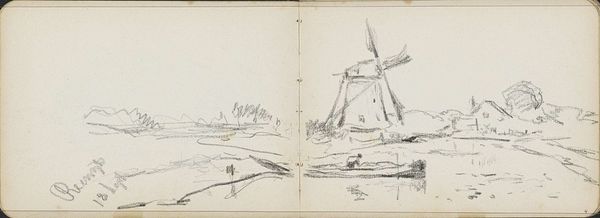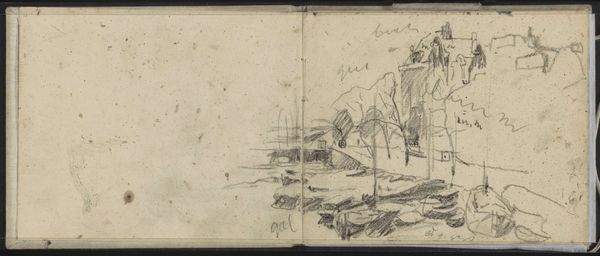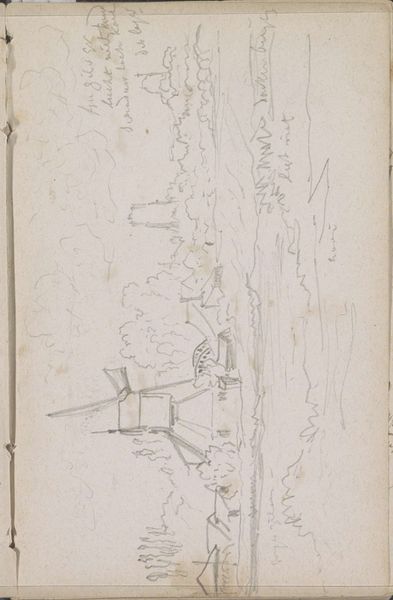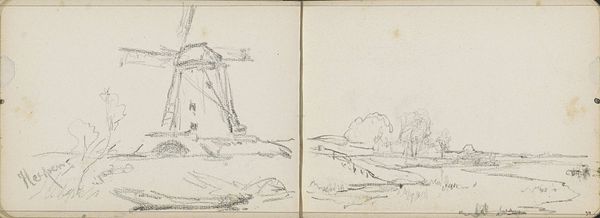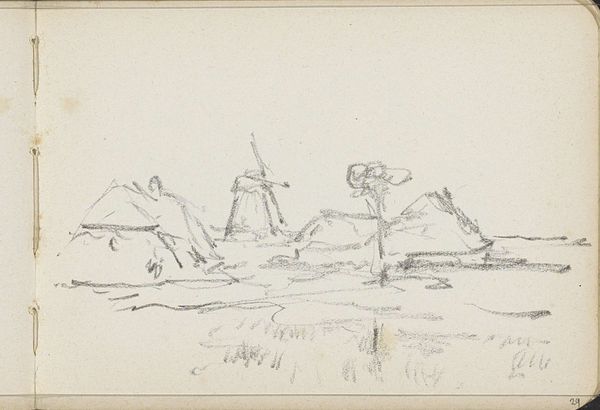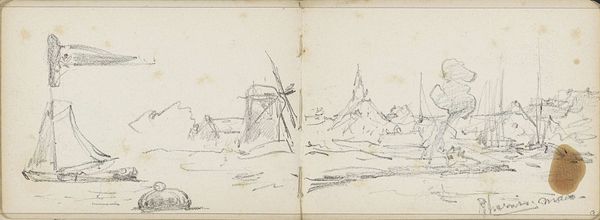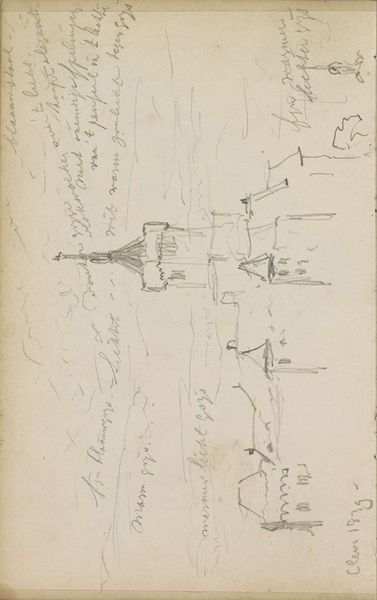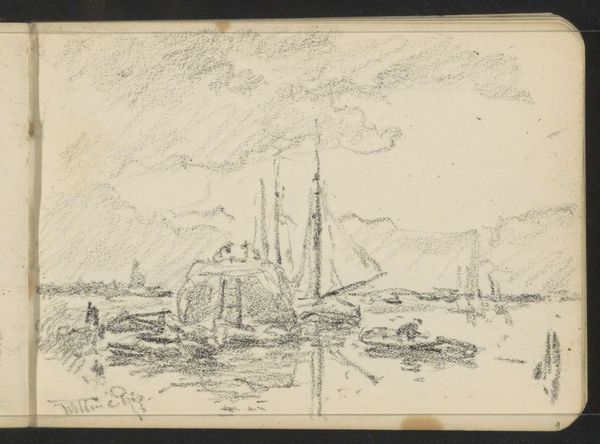
Windmolen en kerktoren aan een weg in Noord-Brabant c. 1839 - 1872
0:00
0:00
johannestavenraat
Rijksmuseum
Copyright: Rijks Museum: Open Domain
Editor: So, this is Johannes Tavenraat's "Windmolen en kerktoren aan een weg in Noord-Brabant," a pencil drawing that was made sometime between 1839 and 1872. It's such a simple sketch, almost minimalist, but it captures a real sense of place. What jumps out at you when you look at it? Curator: For me, the allure resides in the materials themselves. The aged paper speaks volumes about the passage of time and the context of creation. Look closely, and you begin to consider where the paper was made, how the pencil was manufactured. Editor: That’s interesting – I hadn't considered the materials like that. I was focusing more on the landscape itself. Curator: But the landscape *is* constructed through material means! Tavenraat is using the pencil to not just represent, but to *produce* an image. The pressure of the pencil, the grain of the paper, all contribute to the scene itself. Editor: So, are you suggesting we think about the economic or social impact of pencil and paper making at the time? Curator: Precisely! Consider who had access to these materials, the rise of sketching as a popular pastime. This drawing offers insight into not just art, but the culture of artistic production in that era, making you question its traditional separation of high art and craft. Editor: I see your point. By considering the materiality, we move beyond just appreciating the image and begin understanding the world that made the image possible. Curator: Indeed. It’s about dismantling the traditional hierarchy of art and examining it as an active part of broader society. Editor: This really changed my perception. I’ll definitely think more about the origins of the artistic process next time.
Comments
No comments
Be the first to comment and join the conversation on the ultimate creative platform.
